In a fog of feelings
German Romanticism
First half of the 19th century
German Romanticism: The window to myself
What makes up a country’s soul? When did the Germans develop a common identity? Ironically, it was Napoleon Bonaparte who gave his easterly neighbors an important reason to develop their own sense of nationality. Although it was probably the last thing the Frenchman had in mind when he crossed the Rhine in 1805, in doing so he united the Germans in their aim of liberating themselves from their occupiers. It was against this backdrop that Clemens Brentano’s romantic ballad “Lore Lay” became a national myth, giving the people a cultural bond. Set near Rheinfels Castle, the poem about a beautiful, enchanting woman said to bring bad luck is still part of German cultural history today. The withdrawal of the French army in 1813 and Lorelei rock – two important images shaping Germany’s national identity united in one painting. This subject could have been painted by Caspar David Friedrich himself.
At the start of the 19th century, many people perceived the world to be an increasingly cold, rational and dispassionate place. Philosophy was dominated by Immanuel Kant and his theory of reason. Industrialization was continuing at a rapid pace, dramatically widening the gap between rich and poor. Artists wanted to break free from these constraints and discover their feelings, dreams and desires. Painters were turning against the severity of classicism in favor of individualism. They wanted their paintings to open a window to their own roots, worlds and feelings – using castles shrouded in mist, mystical places that look straight from romantic legends and longing gazes into the distance.
Ludwig Richter, Otto Runge and above all Caspar David Friedrich are among the most important representatives of German Romanticism. Friedrich is also the most famous painter of German landscapes, which he portrays in a mysterious, magical light. The artist, who alongside other figures such as Clemens Brentano and Heinrich Kleist became known as “friends of the Fatherland”, used his works to give substance to Germany’s growing sense of nationality, just like Brentano’s “Lore Lay”. The poem, which captured the soul of the Germans, was highly likely to have been familiar to Friedrich. However, he never painted a picture of it.
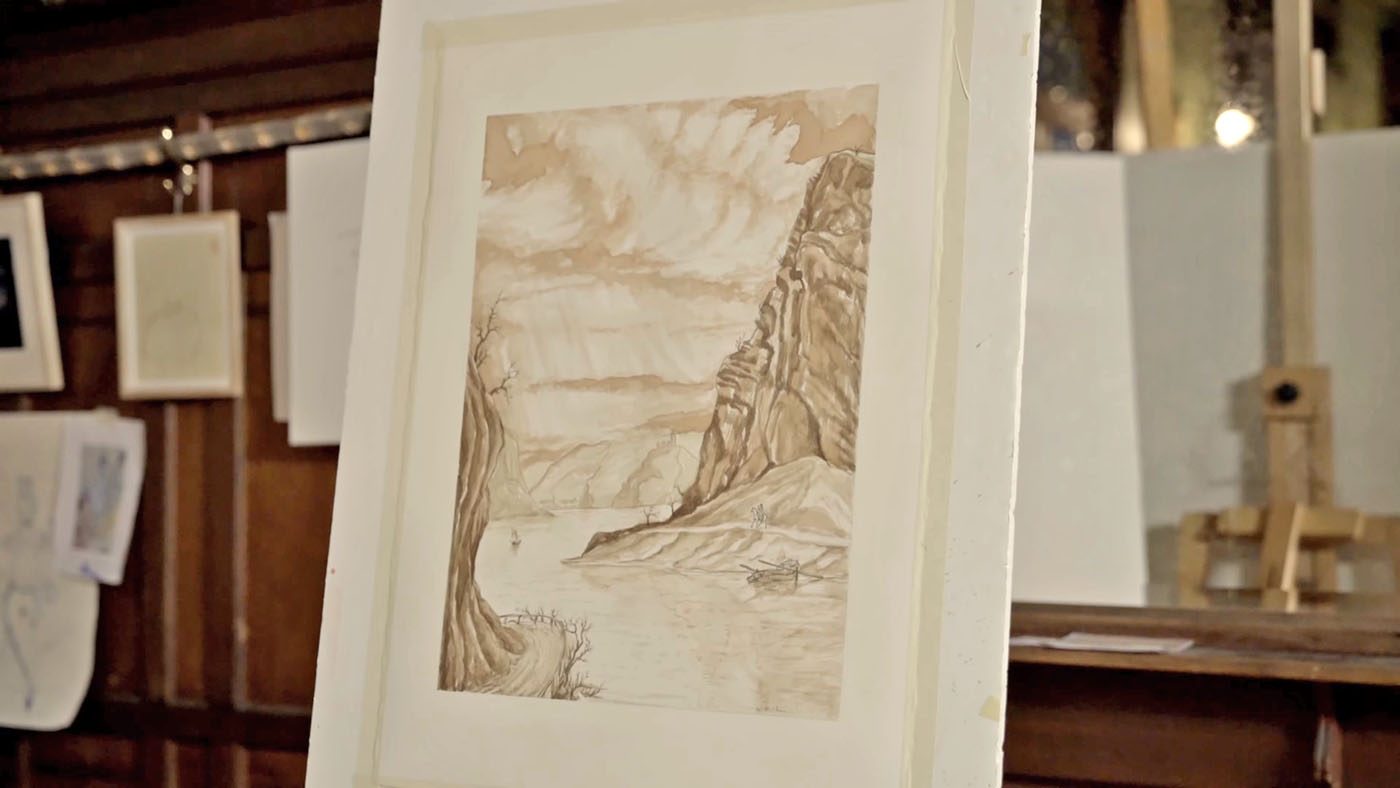
In the artist’s studio: before Wolfgang Beltracchi put paint to canvas, he planned the structure of the painting in a watercolor study.
A Rock Ingrained in the German Identity
The legend of the beautiful Lore Lay, which unfolded near Rheinfels Castle in Sankt Goarshausen, tells the story of a lady who was left by her lover and from then on used a form of sorcery to bring about the demise of any man who looked into her eyes. The poem, which was written in 1800, captured the German psyche. Brentano ended it with the verses: “Bishop, let me die. I am tired of life. For everyone must perish. Who looks into my eyes.” Heinrich Heine picked up on the topic again in 1824, writing the following famous lines: “I know not if there is a reason, why I am so sad at heart.” These words remain ingrained in the Germans’ cultural memory to this very day and the rocks near Sankt Goarshausen, where Lore Lay is said to have fallen to her death, are a symbol of German Romanticism. There is another reason why the setting of “Lore Lay” is steeped in history, as Napoleon’s troops crossed the Rhine in 1805 and were pushed back over it in 1813 after the Battle of Leipzig. By setting his painting of the last French soldiers crossing the Rhine against the backdrop of the landscape surrounding the Lorelei rock, Beltracchi creates a link between the liberation of Germany and the poem that plays such an important role in the country’s national identity. Both of these themes merge into one in the piece created in the melancholy artistic voice of Friedrich.
The Lorelei rock at sunset. Napoleon watches from the river bank as a boat brings the last men of the Grande Armée across the Rhine. Katz Castle can be seen overlooking the river – however, this is a historical inaccuracy, as the castle had been bombarded by Napoleon a few years prior to the Battle of Leipzig. Wolfgang Beltracchi nevertheless decided to keep it in the background in order to mirror Caspar David Friedrich’s style of painting. Although Friedrich was one of the most prolific painters of German landscapes, he often painted places he had never actually visited. He used existing, possibly restored engravings to find out about places with which he was not familiar.
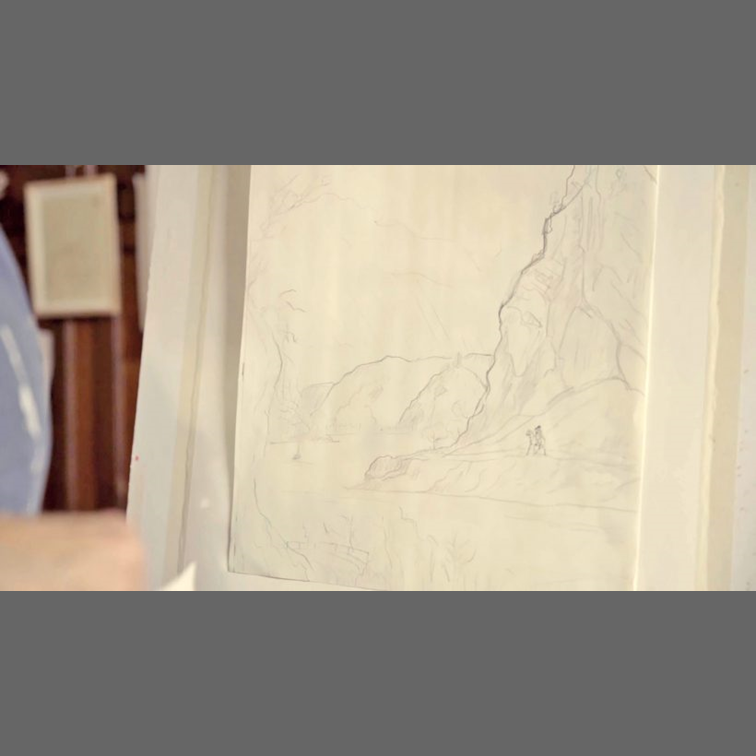
Wolfgang Beltracchi starts by sketching the painting in pencil. Sitting on his horse, Napoleon watches the last of the French soldiers crossing the Rhine.
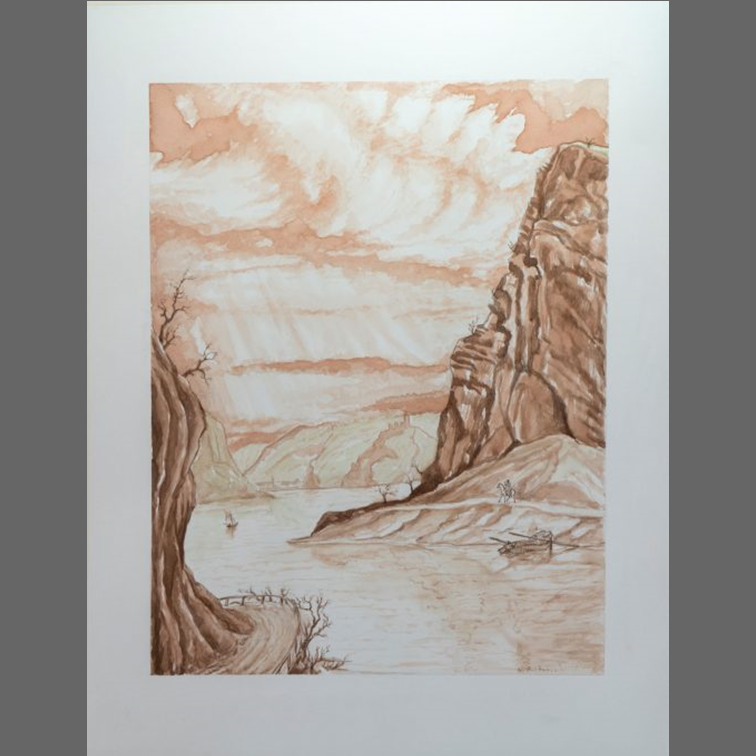
The artist then paints the scene in watercolor.
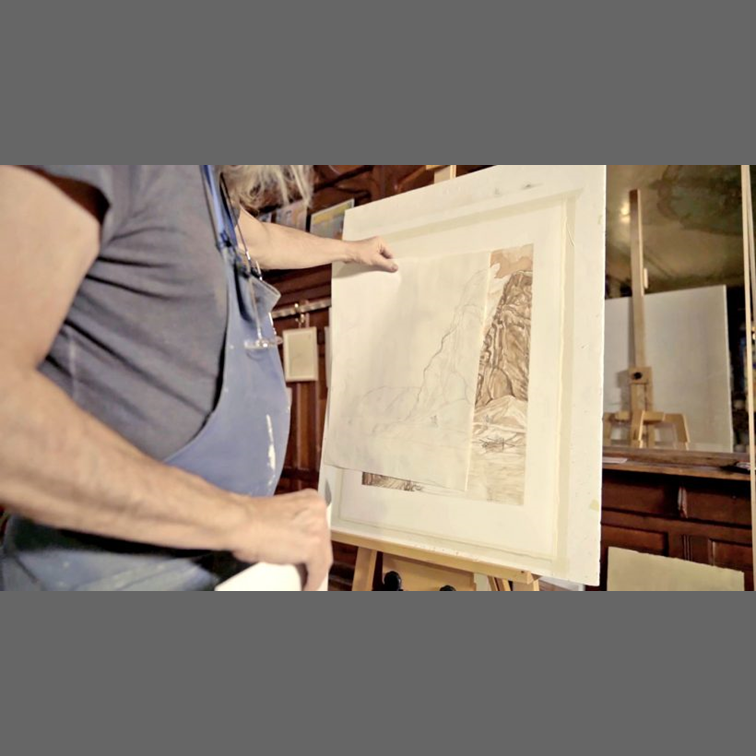
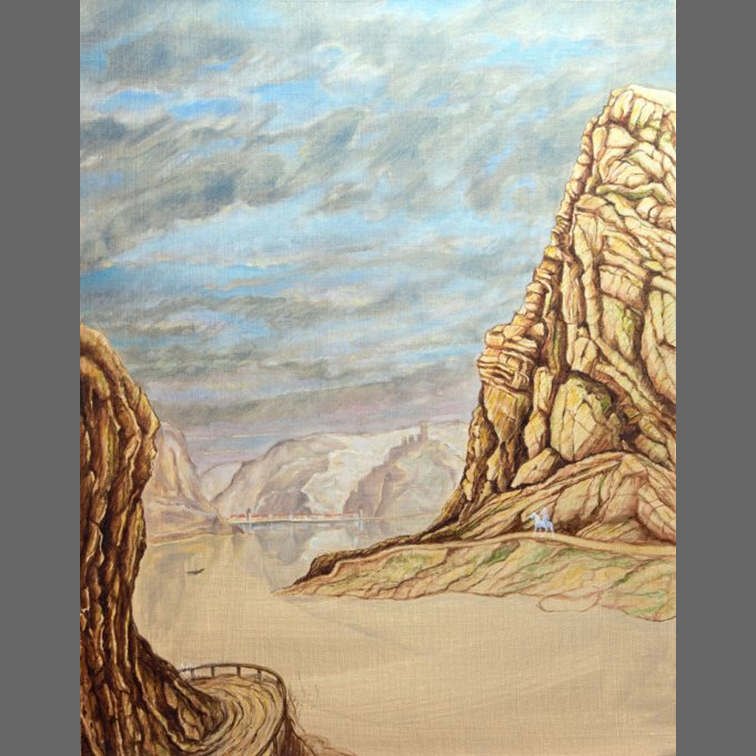
The composition is complete. Now, it is time to start painting the canvas, which can be seen here near the start of the process.
German Romanticism
While English Romanticism focused on harmonious landscapes, the landscapes painted by German artists like Caspar David Friedrich, Otto Runge or Ludwig Richter were full of mystery.
1. TURNING AWAY FROM CLASSICISM
Romanticism turned its back on the repeated emulation of antiquity and the practice of drawing inspiration from classical art. Its proponents were dedicated to neglected themes from the Middle Ages. Myths and legends were brought back to life by both writers and artists.
2. BLUE FLOWER
Like their predecessors, Romantic painters loved to use symbols. The most well known is arguably the blue flower (blaue Blume), which originated from a literary work by poet Novalis. It embodies the longing typically felt by German Romantics for the infinite and a heightened awareness of all the emotions.
3. DOMINANCE OF POETRY
Literary compositions, folk poetry, theater and music had never previously been as important as they were in the Romantic era. In particular, fairytales, like those written by The Brothers Grimm, are still read today.
4. A JOURNEY INTO THE SELF
Romanticism invited the beholder to embark on a journey, for which the painter only provided the destination and possibly a direction. Dreaming faces, desolate landscapes and light effects invite us to immerse ourselves in our own dreams.
5. UNREALITY
Besides open and light yet always imaginary scenery, artists chose to paint bleak settings such as old castles, dark forests or eerie graveyards. Known as Dark Romanticism, these ideas were also later reflected in other areas, such as the essays written by Sigmund Freud or Wagner’s opera The Ring of the Nibelung.
Eras of art in the KAIROS project
Medieval art
Early Netherlandish painting
Italian Renaissance
Mannerism
Early Baroque
Rokoko